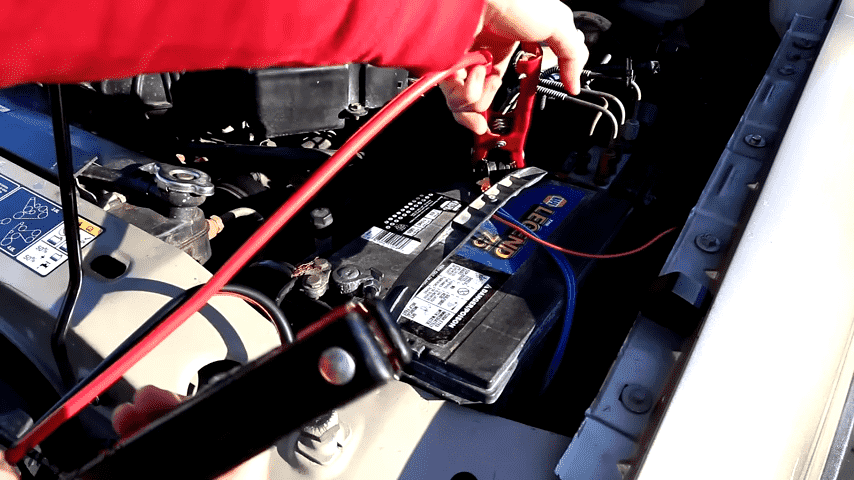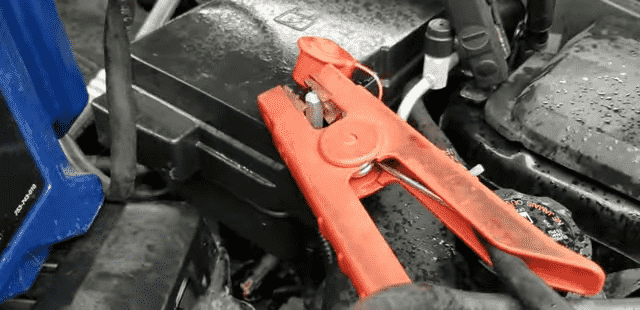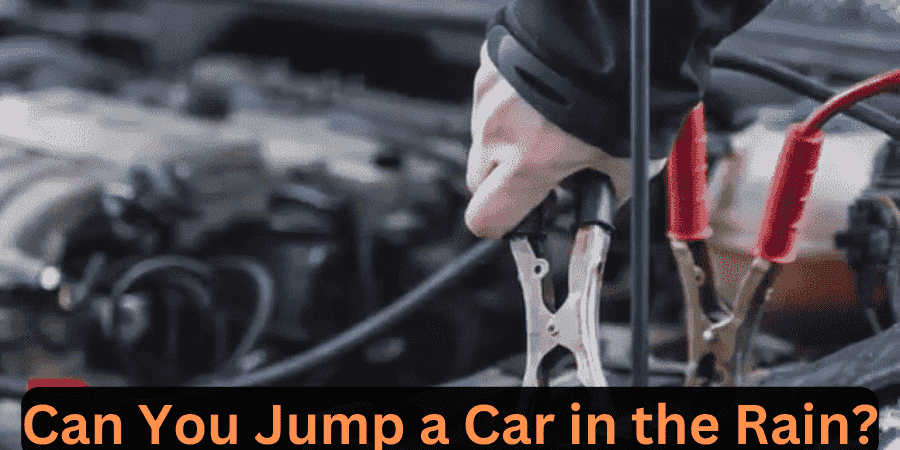Imagine this: You are on a highway and desire a smoke break, and as you step out of your car, it begins to rain, and your car would not start. Your battery is dead, and now you are sitting in the car wondering if it is wise to get a jump start in this kind of climate. Every driver should know how to jump-start a car, but to do it in the rain is a little bit complicated. In this article, you will learn if you can jump a car in the rain, and if you want to try it, follow these simple instructions.
What Does It Mean to Jump-Start a Car?

Boosting a car means charging a dead battery with the help of another source of power. This process directly links your car’s battery to that of another car, and this grants your engine roaring and recharging of the battery.
Why Might a Car Need a Jump Start?
It is possible to need a jump start for many reasons, including keeping the lights on, having a bad alternator, or probably having an old battery that does not hold charge.
Essential Equipment for Jump-Starting
To start a car, you will require jumping cables and another car that has a good battery that can help charge the dead car battery. It is also good to ensure one has protective gear, such as a pair of gloves and safety glasses.
Safety Precautions
General Safety Tips for Jump-Starting a Car
Car batteries must be handled with care to avoid disastrous outcomes — they could contain explosive items such as sulfuric acid. More specifically, it is required to make sure that both vehicles are switched off before connecting the jumper cables. Quality cables should be used during the process with no metal near the battery terminals to prevent spark production, and one should avoid leaning over the battery when executing the jump-start.
Specific Precautions for Jump-Starting in the Rain
Starting a car when it is raining is a bit more complicated as compared to usual practices. Water is a good conductor of electricity, so the jumper cables and all the connections should ideally be kept as dry as possible. Officials are advised to wear rubber soles and shoes to minimize the chances of getting a shock. They should also avoid standing in muddy water.
Step-by-Step Guide to Jump-Starting a Car
Step 1: Positioning the Cars Correctly
Pull the working vehicle close enough to the dead car so that the jumper cables can fit in both the battery terminals and the battery of the working vehicle but not touch each other.
Step 2: is to connect the Jumper cables
Connect one end of the red (positive) cable with the positive post of the dead battery. Join the other end to the positive terminal of the working battery. Subsequently, the black cable is installed on the negative terminal of the working battery. Secure the other end of the cable to an unplated metallic part of the dead car different from the battery.
Step 3 Beginning: Starting the Engine
Ignite the engine of the working car and allow it to warm up for about 5-10 minutes. Then, attempt to start the dead car. If it does not start up, wait a couple more minutes before attempting to start it up again.
Step 4: Removing the Jumper Cables
Once the dead car starts, carefully remove the jumper cables in the reverse order: Black clip to the metal and another black wire to the negative terminal of the working car, Red wire from the positive terminal of the working car, and from the positive terminal of the dead car.
Step 5: allowing the engine to run
Allow the revived car to run for not less than 20 minutes so that the alternator charges the battery.
Challenges of Jump-Starting a Car in the Rain

Electrical Hazards
Namely, water and electricity are not the best of friends and, therefore, creative. It is also important to note that when jump-starting a car, especially during a rainy season, there are dangers of an electric shock. Work carefully with the jumper cables, and do not allow them to get wet.
Visibility and Slipperiness
The problem is that rain distorts vision by making the air murky and making contact paths slippery, which hinders jump-starting endeavors. They should be well-lit because when not well-lit, injuries may be aggravated. Then, there should be a firm standing so that the patient does not fall, especially if they are elderly.
Handling Wet Jumper Cables
This holds specially true if one or both of the jumper cables are wet. If your cables are wet, then it is advisable to wipe the cables as much as you can before using them.
Can You Safely Jump a Car in the Rain?
Evaluating the Risks
As much as one could try to jump-start a car in the rain, it is important sometimes to count the cost. Advanced age: old people are more likely to fall in wet areas and hence be exposed to wet condition-related risks such as electric shock.
Expert Opinions
According to many automobile professionals, it is discouraged to jump-start a car during a heavy downpour. They advised that one has to wait for the rain to cease or seek help from a doctor.
Real-Life Examples
Yet, there are times that people were able to jump-start automobiles in the rain, provided that they insisted on safety measures. Such examples indicate that it is rather unwise but still doable.
Tips for Jump-Starting a Car in the Rain
Using Protective Gear
Before this activity, wear rubber gloves and rubber-soled shoes to avoid an electric shock. Perhaps a jacket of that color could be useful if it can be made not to get wet.
Keeping Cables Dry
It is also recommended that the jumper cables should be connected with as much dryness as you possibly can. Wash them with soap and water, but avoid using water on them if they become wet; use a towel or cloth to wipe them clean.
Ensuring Good Visibility
First, the light source should be aimed at the location of the brightly lit vehicle, including the use of a flashlight or headlights of the working vehicle. It is also important to have fairly good visibility for the jumper connection as a result of the momentary appearance of the vapor.
Common Mistakes to Avoid
Incorrect Cable Connections
It is good practice to ensure that the cables are connected to the correct terminal every time. Switching the connections can be very disastrous for both automobiles.
Not Following Safety Procedures
Omission of the safety measures may result in incidents. It is important to always adhere to the safety measures provided, particularly when the area is wet.
Ignoring Weather Conditions
It is advisable not to attempt a jump start during a storm because the danger is too high, or better still, seek the assistance of a mechanic.
Alternative Solutions
Portable Jump Starters
Portable jump starters are a convenient alternative to using another vehicle. They are easy to use and reduce the risks associated with jumper cables.
Roadside Assistance Services
If you’re unsure about jump-starting your car, consider calling a roadside assistance service. Professionals can safely revive your battery, even in adverse weather conditions.
Preventative Measures to Avoid Needing a Jump Start
Regular maintenance can help prevent battery issues. Ensure your battery terminals are clean, and consider investing in a battery tester to check its health regularly.
Final Thought
Jump-starting a car in the rain is possible, but it comes with increased risks. By following proper safety precautions and taking extra care, you can safely jump-start your vehicle even in wet conditions. Always prioritize safety and consider alternative solutions if the weather is too severe.
FAQs
Is it dangerous to jump a car in the rain?
Yes, it can be dangerous due to the risk of electric shock and slippery conditions. Proper precautions are necessary to ensure safety.
Can water damage my car’s battery?
Water can cause corrosion and damage to battery terminals. Keep the battery area as dry as possible during the jump-start process.
What should I do if my jumper cables get wet?
Dry them off thoroughly before using them to avoid electrical hazards.
How can I prevent my car battery from dying?
Regular maintenance, such as cleaning battery terminals and checking the battery’s health, can help prevent it from dying.
Are there any special tools for jump-starting in bad weather?
Portable jump starters are a good tool for bad weather, as they don’t require another vehicle and reduce the risk of electrical issues.

